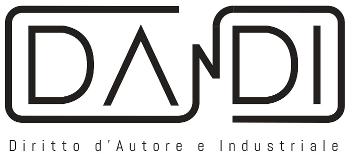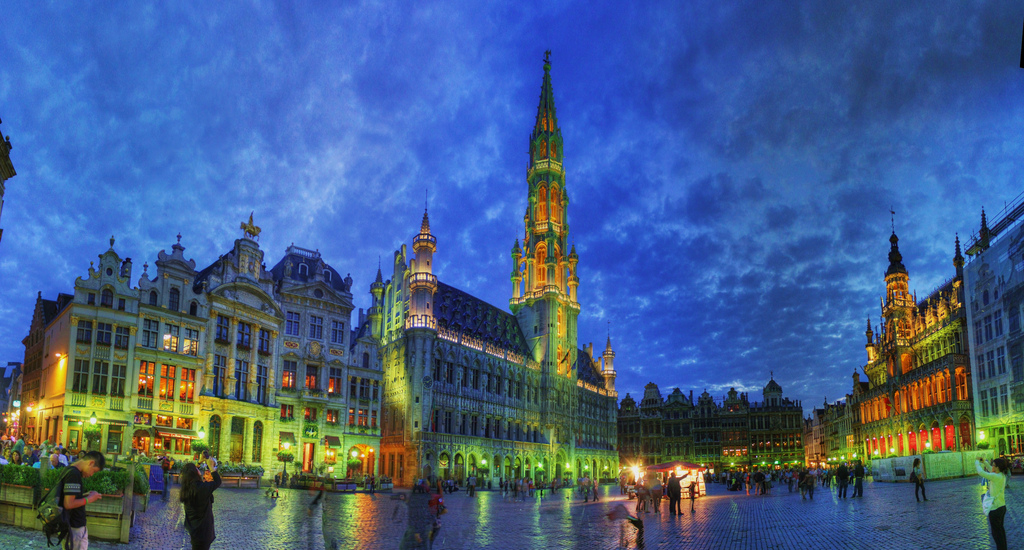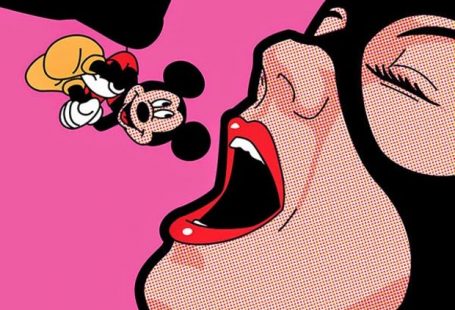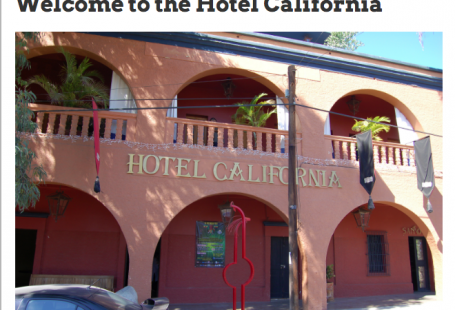FOP (Freedom of Panorama) in Belgium and France: updates (by Piero Domenico Muscillo)
World Intellectual Property Organization has reported on Lex News 2 important Laws which have been approved and enacted, one in Belgium and the other one in France.
The Law approved in Belgium is the Loi du 27 juin 2016 modifiant le Code de droit économique en vue de l’introduction de la liberté de panorama – Act of June 27, 2016 amending the “Code de droit économique” (Code of Economic Law) for the “Introduction of Freedom of Panorama”.
It was published in the (Moniteur Belge) Official Gazette on July 5, 2016, and entered into force on July 15, 2016. This Act introduces the “panorama copyright exception” to Article XI.190 of Chapter 2, Title 5, Book XI of the “Code de droit économique” (Code of Economic Law), which allows “reproduction and communication to the public of works of visual, graphic and architectural art permanently situated in public places, provided that such reproduction does not conflict with a normal exploitation of the work and does not unreasonably prejudice the legitimate interests of the author.”
Since I have faced the topic of Freedom of Panorama in the French Legislation, I will focus on the Loi n° 2016-1321 du 7 Octobre 2016 pour une République numérique – Law No. 2016/1321 of October 7, 2016 for a Digital Republic.
This law has entered into force on October 9, 2016 and introduces some important amendments to Articles L. 122-5 and L. 342-3 of the Legislative Part of the Intellectual Property Code (“ Partie législative del Code de la propriété intellectuelle”). These amendements are provided by Article 38 and 39 of the abovementioned Law.
The first Article, in the french version, establishes that:
“Le code de la propriété intellectuelle est ainsi modifié: 1° Après le second alinéa du 9° de l’article L. 122-5, il est inséré un 10° ainsi rédigé : « 10° Les copies ou reproductions numériques réalisées à partir d’une source licite, en vue de l’exploration de textes et de données incluses ou associées aux écrits scientifiques pour les besoins de la recherche publique, à l’exclusion de toute finalité commerciale. Un décret fixe les conditions dans lesquelles l’exploration des textes et des données est mise en œuvre, ainsi que les modalités de conservation et de communication des fichiers produits au terme des activités de recherche pour lesquelles elles ont été produites; ces fichiers constituent des données de la recherche; » 2° Après le 4° de l’article L. 342-3, il est inséré un 5° ainsi rédigé : « 5° Les copies ou reproductions numériques de la base réalisées par une personne qui y a licitement accès, en vue de fouilles de textes et de données incluses ou associées aux écrits scientifiques dans un cadre de recherche, à l’exclusion de toute finalité commerciale. La conservation et la communication des copies techniques issues des traitements, au terme des activités de recherche pour lesquelles elles ont été produites, sont assurées par des organismes désignés par décret. Les autres copies ou reproductions sont détruites.»
(The code of intellectual property is amended as follows: 1° After the second paragraph of 9° Article L. 122-5, is inserted 10° reads: “10° Copies or digital reproductions made from a legal source, to text mining and data included or associated with the scientific literature for the needs of public research, excluding any commercial purpose. A decree sets the conditions for exploration of the texts and data is implemented as well as the conservation and communication modalities of files produced at the end of the research activities for which they were produced; these files are research data;” 2° After 4° to Article L. 342-3, is inserted 5° reads: “5° Copies or digital reproductions of the base made by a person who has lawfully access to text searches and data included or associated with the scientific literature in a research setting, excluding any commercial purpose. Conservation and communication of technical copies treatment outcomes at the end of the research activities for which they were produced, are provided by bodies appointed by decree. Other copies or reproductions are destroyed.”)
Therefore it provides for copyright exceptions and it is related to “text and data mining for – non commercial – scientific research purposes, which allows the public and researchers to analyze scientific data to which they have lawful access.
Specifically the amendment to Article L. 122-5, embodied in Article 38 (1^ part) of the Law 2016/1326, introduces a 10° paragraph which states, in the french version, that:
10° “Les copies ou reproductions numériques réalisées à partir d’une source licite, en vue de l’exploration de textes et de données incluses ou associées aux écrits scientifiques pour les besoins de la recherche publique, à l’exclusion de toute finalité commerciale. Un décret fixe les conditions dans lesquelles l’exploration des textes et des données est mise en œuvre, ainsi que les modalités de conservation et de communication des fichiers produits au terme des activités de recherche pour lesquelles elles ont été produites; ces fichiers constituent des données de la recherche;”
(10° “Copies or digital reproductions made from a legal source, to text mining and data included or associated with the scientific literature for the needs of public research, excluding any commercial purpose. A decree sets the conditions for exploration of the texts and data is implemented as well as the conservation and communication modalities of files produced at the end of the research activities for which they were produced; these files are research data.”).
This Article is very important, due to the fact that it allows researchers to “text mining and data included or associated with the specific literature for the needs of public research…”. This means that it is not allowed any commercial purpose. The Article reminds that a decree will set the conditions until researchers will be able to fulfill these activities. At the end of the abovementioned Article it is stated that “these files are research data”.
The amendment to Article 342 – 3 of the Intellectual Property Code, provided by Article 38 (2^ part) of the Law 2016/1326, introduces a 5° paragrah which states, in the french version, that:
5° “Les copies ou reproductions numériques de la base réalisées par une personne qui y a licitement accès, en vue de fouilles de textes et de données incluses ou associées aux écrits scientifiques dans un cadre de recherche, à l’exclusion de toute finalité commerciale. La conservation et la communication des copies techniques issues des traitements, au terme des activités de recherche pour lesquelles elles ont été produites, sont assurées par des organismes désignés par décret. Les autres copies ou reproductions sont détruites.”.
(5° “Copies or digital reproductions of the base made by a person who has lawfully access to text searches and data included or associated with the scientific literature in a research setting, excluding any commercial purpose. Conservation and communication of technical copies treatment outcomes at the end of the research activities for which they were produced, are provided by bodies appointed by decree. Other copies or reproductions are destroyed.”).
In my opinion the Lawmaker, through this Article, aimed to stress out an important principle: copies or digital reproductions may be used by researchers, under a research setting, only if they are not used for a commercial purpose. This Article mentions once again the decree, which has to be approved, that will indicate the bodies appointed by the aforementioned decree that will have to conserve and communicate the treatments to technical copies and made itself clear once again by affirming that “Other copies or reproductions are destroyed”.
The second Article, embodied by Article 39 of the Law 2016/1326, in the french version, calls for:
“Après le second alinéa du 9o de l’article L. 122-5 du même code, il est inséré un 11° ainsi rédigé: « 11° “Les reproductions et représentations d’œuvres architecturales et de sculptures, placées en permanence sur la voie publique, réalisées par des personnes physiques, à l’exclusion de tout usage à caractère commercial.” »
(After the second paragraph of 9 o Article L. 122-5 of the Code, is inserted 11° reads: “11° Reproductions and representations of architectural works and sculptures, located permanently on the road public, carried out by natural persons, excluding commercial character to use. “).
It too, as like Article 38 of the aforesaid Law, provides a copyright exception regarding “freedom of panorama limited to non-commercial uses, relating to reproduction and representation of architectural works and sculptures, permanently located in public places, made by physical persons.”
Mainly in Article 122 – 5 of the Intellectual Property Code, as modified by Articole 39, it has been added a new paragraph, 11°. It states – in the french version- that,
“11° “Les reproductions et représentations d’œuvres architecturales et de sculptures, placées en permanence sur la voie publique, réalisées par des personnes physiques, à l’exclusion de tout usage à caractère commercial.”
(11° “Reproductions and representations of architectural works and sculptures, located permanently on public roads, made by natural persons, excluding commercial character to use.”)
This amendment is paramount, due to the fact that it introduces in the French Legislation, the “Freedom of Panorama”, that represents an exception to copyright. The Legislator refers to “permanently works and sculptures located on public roads (so not in private properties) which have been made by natural persons.” France as like Italy and other European Countries (Germany and the UK) has excluded from the application of this exception, provided by this Article, all kind of exploitations made for a commercial purpose. Although France has introduced this exception, frankly it is considered a “late, partial and limited transposition” of the aforementioned decisions made by other European Countries. Speaking personally, all things considered this could be seen as a little step towards further and broader exceptions to copyright protection.
Dandi Law Firm provides legal assistance in several Practice Areas. Check out our Services or contact Us!






